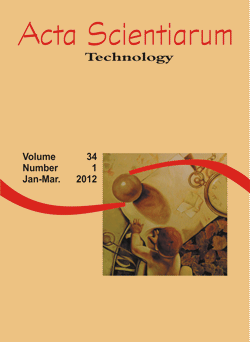<b>Estimation of partition, free and specific diffusion coefficients of paclitaxel and taxanes in a fixed bed by moment analysis: experimental, modeling and simulation studies</b> - doi: 10.4025/actascitechnol.v34i1.8060
DOI:
https://doi.org/10.4025/actascitechnol.v34i1.8060Keywords:
Cancer, taxol, mass transfeAbstract
Paclitaxel, as known Taxol®, is an important agent in cancer treatment, founded in mixture with many structural analogs, or taxanes, present in natural source or plant tissue culture broth. The adsorption techniques are used in the purification of placlitaxel from that complex mixture, but despite of the strategy it is important to know the basic parameters associated with any process, such as isotherms and mass transfer parameters. In this paper is presented a simple model to estimate these parameters by moment analysis. After to consider linear isotherm for adsorption, the partition coefficient, free and effective diffusion coefficients of paclitaxel and four major components, in a plant tissue culture broth, were estimated from the first and second moments of peaks in pulse-elution chromatograms. The experimental chromatograms at two flow rates are compared with those ones from model, also proposed in this work. The experimental results of free diffusion coefficient are compared with that ones from the Literature.Downloads
Download data is not yet available.
Downloads
Published
2011-07-14
How to Cite
Cremasco, M. A., & Wang, L. N.-H. (2011). <b>Estimation of partition, free and specific diffusion coefficients of paclitaxel and taxanes in a fixed bed by moment analysis: experimental, modeling and simulation studies</b> - doi: 10.4025/actascitechnol.v34i1.8060. Acta Scientiarum. Technology, 34(1), 33–40. https://doi.org/10.4025/actascitechnol.v34i1.8060
Issue
Section
Chemical Engineering
License
DECLARATION OF ORIGINALITY AND COPYRIGHTS
I Declare that current article is original and has not been submitted for publication, in part or in whole, to any other national or international journal.
The copyrights belong exclusively to the authors. Published content is licensed under Creative Commons Attribution 4.0 (CC BY 4.0) guidelines, which allows sharing (copy and distribution of the material in any medium or format) and adaptation (remix, transform, and build upon the material) for any purpose, even commercially, under the terms of attribution.
Read this link for further information on how to use CC BY 4.0 properly.











8.png)




